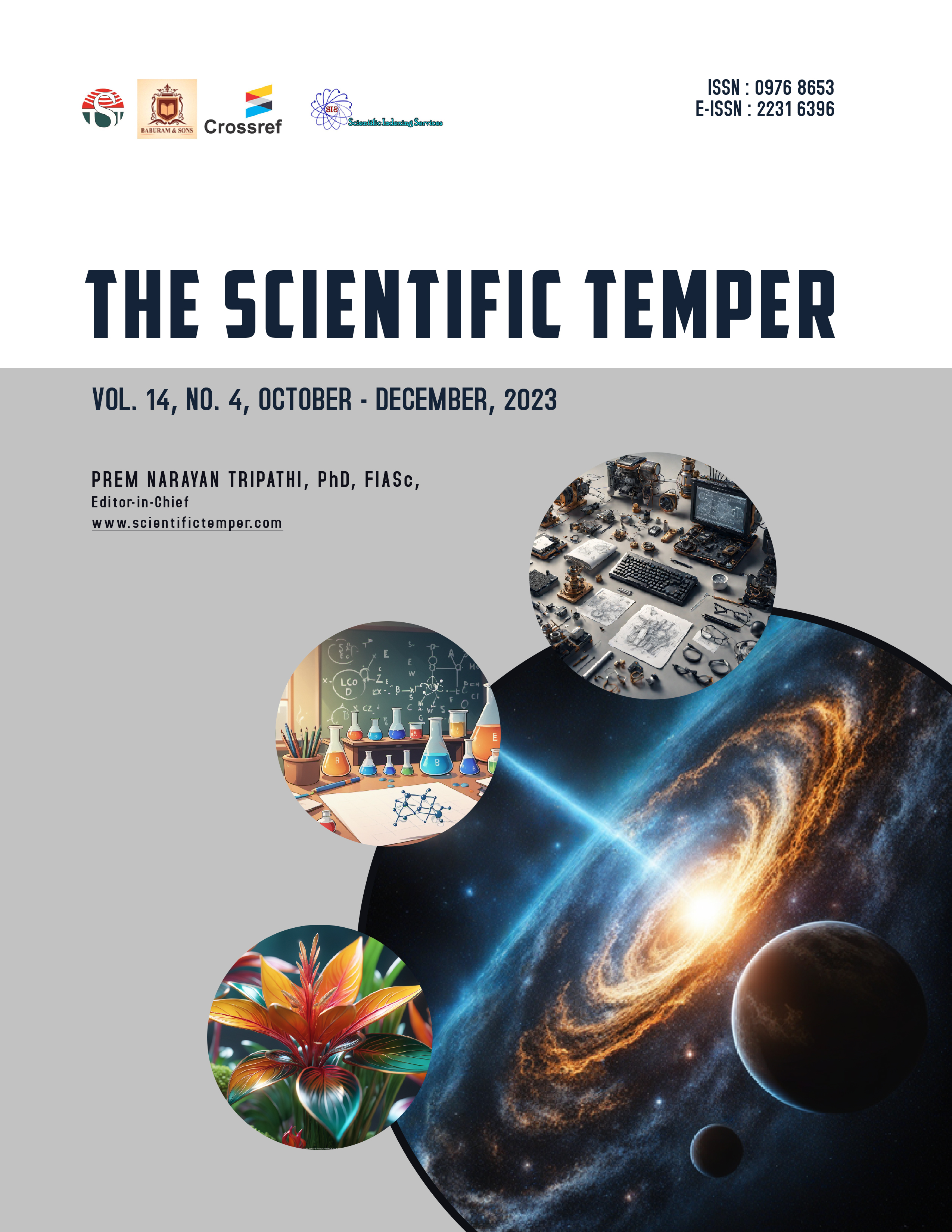Features of diagnosing ovarian tumors in women of pre- and postmenopausal age
Downloads
Published
DOI:
https://doi.org/10.58414/SCIENTIFICTEMPER.2023.14.4.06Keywords:
ovarian cancer, pre- and postmenopausal women, tumor-associated marker CA-125, HE-4, screeningDimensions Badge
Issue
Section
License
Copyright (c) 2023 The Scientific Temper

This work is licensed under a Creative Commons Attribution-NonCommercial-ShareAlike 4.0 International License.
Currently, one of the main ways to fight cancer, which can improve the results of treatment of ovarian neoplasms, is screening. Presently, the issue of organizing and conducting preventive examinations of women, including those of reproductive age, is one of the most urgent problems of primary health care institutions. The subjects of the study were 168 pre- and postmenopausal patients aged 20 to 60 years with ovarian tumors suspected of oncological pathology, who received treatment on the basis of the Tashkent city branch of the Republican Specialized Scientific and Practical Medical Center of Oncology and Radiology for the period from 2018 to 2022, taking into account the selected age interval. An assessment was made of laboratory research methods, such as: general blood count, biochemical blood test, general urinalysis, tumor-associated marker CA-125, HE-4. In the comparative analysis of risk factors, when ovarian tumors develop in pre- and postmenopausal women, malignant and borderline ovarian tumors have complaints, parity, gynecological anamnesis, and the presence of extragenital diseases, which do not have specific characteristics for malignant or borderline tumors. therefore, it does not provide sufficient information in the process of diagnosing ovarian tumors. The sonographic characteristics associated with the degree of ovarian tumor malignancy were examined, and the tumor had a solid component (p <0.001), the presence of obstructions (p = 0.0005), and the presence of growth on the inner surface of the capsule (p <0.001), the presence of a significant amount of free fluid in the pelvic cavity (p <0.001), the roughness of the surface of the tumor capsule (p < 0.001) were observed to be characteristic of more dangerous processes.Abstract
How to Cite
Downloads
Similar Articles
- Narmetova Y. Karimovna, Abdusamatov Khasanboy, Abdinazarova Iltifotkhon, Nurbaeva Khabiba, Mirzayeva Adiba, Psychoemotional characteristics in psychosomatic diseases , The Scientific Temper: Vol. 14 No. 04 (2023): The Scientific Temper
- K. Sreenivasulu, Sampath S, Arepalli Gopi, Deepak Kartikey, S. Bharathidasan, Neelam Labhade Kumar, Advancing device and network security for enhanced privacy , The Scientific Temper: Vol. 14 No. 04 (2023): The Scientific Temper
- Dattatraya Pandurang Rane, Amey Adinath Choudhari, Rita Kakade, Technology-driven financial inclusion: Opportunities for corporate expansion in emerging markets , The Scientific Temper: Vol. 15 No. 04 (2024): The Scientific Temper
- Shubharani Muragod, Sangeeta Kharde, Premenstrual syndrome among adolescent girls and its influence on academic performance- A cross-sectional study , The Scientific Temper: Vol. 14 No. 04 (2023): The Scientific Temper
- Royan Chhetri, Prem Kumar N, Polyphenolic compounds as novel reno-modulatory agents in the management of diabetic nephropathy in Wistar rats , The Scientific Temper: Vol. 15 No. 04 (2024): The Scientific Temper
- K. Akila, Location-specific trusted third-party authentication model for environment monitoring using internet of things and an enhancement of quality of service , The Scientific Temper: Vol. 14 No. 04 (2023): The Scientific Temper
- Jayshree Mehta, Pranjal Bhatt, Vikas Raval, Skill development in India: Challenges, current, and future perspectives , The Scientific Temper: Vol. 15 No. spl-2 (2024): The Scientific Temper
- Sawitri Devi, Raj Kumar, Unveiling scholarly insights: A bibliometric analysis of literature on gender bias at the workplace , The Scientific Temper: Vol. 15 No. 03 (2024): The Scientific Temper
You may also start an advanced similarity search for this article.



